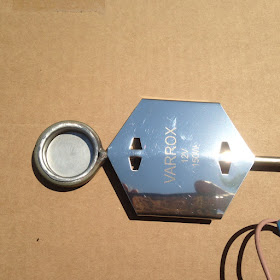The upcoming week will be hot and humid. Pulling honey with fume boards works very well in hot weather. The bees leave the supers very quickly.
If no queen excluders were used on the hive and there is some brood in the supers. The bees will not leave the brood with a fume board or a bee escape. The only way to get the bees off the frames is with a bee brush.
If supers are pulled in the humid weather, the supers should be put in a room with a dehumidifier and a fan running. If the supers are placed in a large area, like an open basement, plastic tarps should be put up to make a temporary room so the dehumidifier would work more efficiently.
I usually pull my honey then leave it in my honey house with a dehumidifier for at least a week before I extract. The dehumidifier will help get the moisture of the honey down to US Grade A level, which is 18.6% water content or less. It is easier to get the water content lower now, before you extract, than after it is after the honey is in a pail.
I do check beekeepers honey with a refractometer to see what their moisture level is. This is a free service I do for my customers. Bring me or mail me a small sample, but fill the container with honey. I only need a thimble full sample. So a small vial works well. A full honey jar is ok also.
Honey that is not US Grade A will ferment with time.
 |
| This is the scale in a refractometer. This honey sample was reading 19.3% |
 |
| Atago Refractometer |
A note about small hive beetle
Beekeepers who purchased their bees from Louisiana, Georgia, Florida, Texas. Have to be careful if your hive has small hive beetle. If the beetles are in your supers and no bees to stop them, the beetle may start laying and beetle larvae can quickly spread. I have heard to prevent this, the beekeeper needs to get the room with the supers down to a relative humidity of 40%.
Speaking of hive beetle. I had a beekeeper that had his bees near a beekeeper that got his bees from Louisiana. The beekeeper had his hive infested with beetles from his neighbor. Small hive beetle can fly up to 20 miles. If a hive is weak it can be very susceptible to beetle activity. In this case, the beetles got so bad that his bees absconded.
Once the ground temperature reach 54 degrees the beetles can no longer pupate in the soil. Refrigerator temperatures kills the beetle in all stages. Beetles can live in the bee cluster throughout the winter. Strong colonies of bees will keep the beetle in check.






